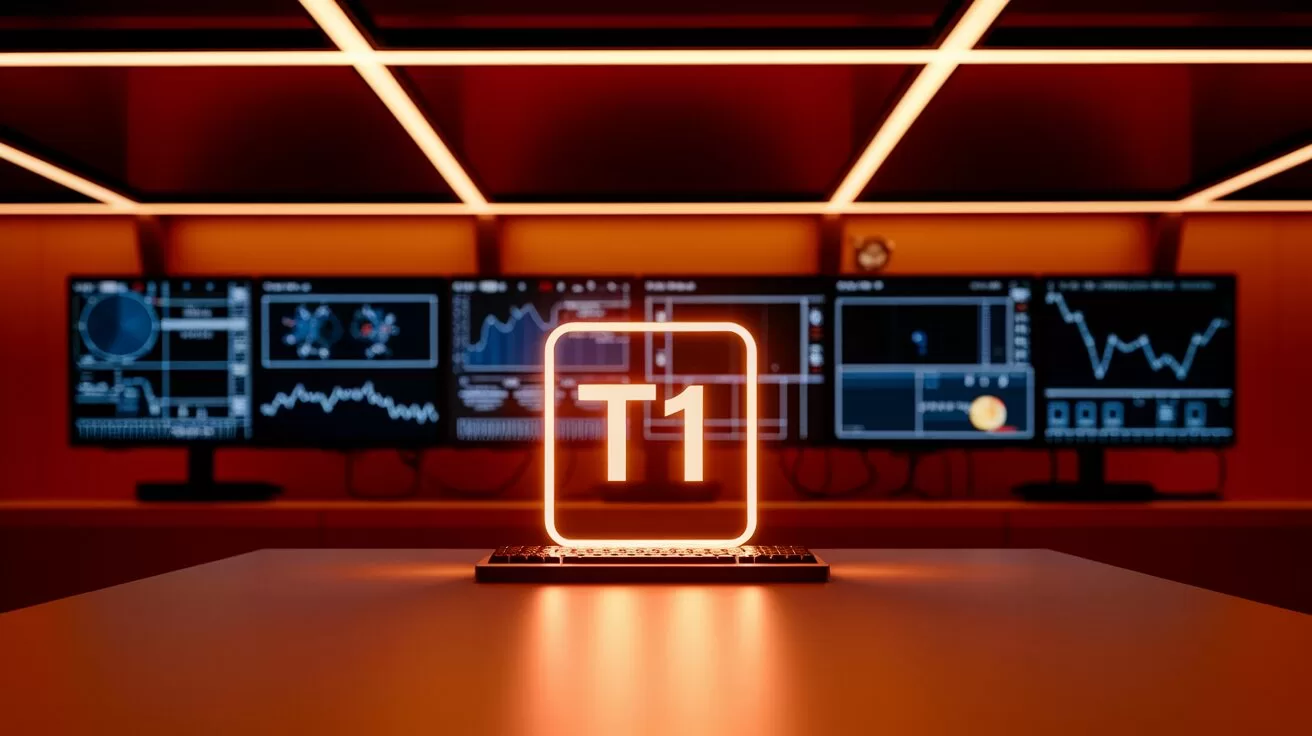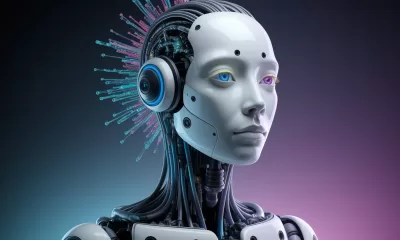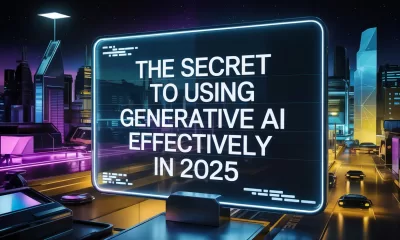News
Unveiling Samsung One UI 7: A Game-Changer in Design and Performance
Samsung One UI 7 brings a significant design overhaul and performance boosts, enhancing user experience.
Published
8 months agoon
By
AIinAsia
TL;DR:
- Samsung One UI 7 brings a major design overhaul, including a complete icon redesign and drop-down bar changes
- Smoother animations and performance boosts are expected with the Android 15-based One UI 7
- Users can look forward to an enhanced user experience, improved performance, and future-proofed devices
The Anticipated Overhaul: Samsung One UI 7
Samsung is gearing up for a significant update to its One UI, with version 7 poised to deliver a comprehensive redesign and smoother animations. According to @iceuniverse, a renowned tech blogger, Samsung One UI 7 will feature “a real redrawing of the icon style” and alterations to the drop-down bar. This article delves into the details of these exciting new features, their implications for users, and the performance enhancements expected with One UI 7.
A Fresh Look: Icon Redesign and Drop-Down Bar Changes
One of the most eagerly awaited changes in Samsung One UI 7 is the complete overhaul of the icon style. This redesign marks the “first real redrawing” of icons, giving a fresh look to the user interface. The new icons are expected to be more modern and visually appealing, enhancing the overall user experience.
Accompanying the icon redesign, the drop-down bar in One UI 7 will also undergo significant changes. This part of the interface is crucial for quick access to settings and notifications, so any improvements here are likely to be welcomed by users. The exact details of these changes are still under wraps, but they promise to enhance the user experience.
Seamless Interactions: Animation Boost
Another key focus of One UI 7 is the enhancement of animations. Smooth and fluid animations significantly contribute to the look and feel of a device. By making animations smoother, Samsung aims to make interactions feel more natural and enjoyable. This improvement is expected to enhance the overall user experience, making usage and navigation more seamless.
Powerful Performance: GeekBench Scores and Android 15 Integration
The performance boosts with One UI 7 are already evident from early benchmarks. The Samsung Galaxy S24 Plus, running on the Android 15-based One UI 7 system, has appeared on GeekBench with impressive scores. It achieved a single-core score of 2114 and a multi-core score of 6616, indicating that Samsung is working on optimising its software to work seamlessly with the latest hardware.
One UI 7 is built on the Android 15 platform, bringing with it all the latest features and enhancements from Google’s newest operating system. This integration ensures that Samsung devices running One UI 7 will receive the latest security updates, performance enhancements, and new features in Android 15.
User Benefits: Enhanced Experience, Improved Performance, and Future-Proofing
The significant design overhaul and animation boost in One UI 7 are likely to greatly enhance the user experience. Users can expect a more modern and visually appealing interface, paired with smoother and more fluid interactions. These changes are not just cosmetic but also functional, making for a more natural and enjoyable user experience.
The integration of Android 15 and the performance boosts seen in early benchmarks suggest that One UI 7 will offer significant performance gains. Users can expect faster and more responsive devices, with better handling of multitasking and resource-intensive apps. This will be a significant advantage for power users who demand the best performance from their devices.
By adopting the latest Android platform and adding significant design and performance improvements, One UI 7 helps future-proof Samsung devices. This ensures that users can enjoy the latest features and updates for longer, extending the lifespan and usability of their devices.
Comment and Share
What are your thoughts on the upcoming Samsung One UI 7 update? Are you excited about the design overhaul and performance enhancements? Share your views in the comments below and don’t forget to subscribe for updates on AI and AGI developments.
You may also like:
- Samsung One UI 6.1 Upgrade Now for New AI Features
- Samsung Galaxy S24: Where AI Takes Center Stage in Asia
- Revamping Your Samsung Galaxy: AI Advancements for Older Models Unveiled
- For more information about Samsung One UI 7 tap here.
Author
Discover more from AIinASIA
Subscribe to get the latest posts sent to your email.
You may like
News
OpenAI’s New ChatGPT Image Policy: Is AI Moderation Becoming Too Lax?
ChatGPT now generates previously banned images of public figures and symbols. Is this freedom overdue or dangerously permissive?
Published
4 days agoon
March 30, 2025By
AIinAsia
TL;DR – What You Need to Know in 30 Seconds
- ChatGPT can now generate images of public figures, previously disallowed.
- Requests related to physical and racial traits are now accepted.
- Controversial symbols are permitted in strictly educational contexts.
- OpenAI argues for nuanced moderation rather than blanket censorship.
- Move aligns with industry trends towards relaxed content moderation policies.
Is AI Moderation Becoming Too Lax?
ChatGPT just got a visual upgrade—generating whimsical Studio Ghibli-style images that quickly became an internet sensation. But look beyond these charming animations, and you’ll see something far more controversial: OpenAI has significantly eased its moderation policies, allowing users to generate images previously considered taboo. So, is this a timely move towards creative freedom or a risky step into a moderation minefield?
ChatGPT’s new visual prowess
OpenAI’s latest model, GPT-4o, introduces impressive image-generation capabilities directly inside ChatGPT. With advanced photo editing, sharper text rendering, and improved spatial representation, ChatGPT now rivals specialised image AI tools.
But the buzz isn’t just about cartoonish visuals; it’s about OpenAI’s major shift on sensitive content moderation.
Moving beyond blanket bans
Previously, if you asked ChatGPT to generate an image featuring public figures—say Donald Trump or Elon Musk—it would simply refuse. Similarly, requests for hateful symbols or modifications highlighting racial characteristics (like “make this person’s eyes look more Asian”) were strictly off-limits.
No longer. Joanne Jang, OpenAI’s model behaviour lead, explained the shift clearly:
“We’re shifting from blanket refusals in sensitive areas to a more precise approach focused on preventing real-world harm. The goal is to embrace humility—recognising how much we don’t know, and positioning ourselves to adapt as we learn.”
In short, fewer instant rejections, more nuanced responses.
Exactly what’s allowed now?
With this update, ChatGPT can now depict public figures upon request, moving away from selectively policing celebrity imagery. OpenAI will allow individuals to opt-out if they don’t want AI-generated images of themselves—shifting control back to users.
Controversially, ChatGPT also now accepts previously prohibited requests related to sensitive physical traits, like ethnicity or body shape adjustments, sparking fresh debate around ethical AI usage.
Handling the hottest topics
OpenAI is cautiously permitting requests involving controversial symbols—like swastikas—but only in neutral or educational contexts, never endorsing harmful ideologies. GPT-4o also continues to enforce stringent protections, especially around images involving children, setting even tighter standards than its predecessor, DALL-E 3.
Yet, loosening moderation around sensitive imagery has inevitably reignited fierce debates over censorship, freedom of speech, and AI’s ethical responsibilities.
A strategic shift or political move?
OpenAI maintains these changes are non-political, emphasising instead their longstanding commitment to user autonomy. But the timing is provocative, coinciding with increasing regulatory pressure and scrutiny from politicians like Republican Congressman Jim Jordan, who recently challenged tech companies about perceived biases in AI moderation.
This relaxation of restrictions echoes similar moves by other tech giants—Meta and X have also dialled back content moderation after facing similar criticisms. AI image moderation, however, poses unique risks due to its potential for widespread misinformation and cultural distortion, as Google’s recent controversy over historically inaccurate Gemini images has demonstrated.
What’s next for AI moderation?
ChatGPT’s new creative freedom has delighted users, but the wider implications remain uncertain. While memes featuring beloved animation styles flood social media, this same freedom could enable the rapid spread of less harmless imagery. OpenAI’s balancing act could quickly draw regulatory attention—particularly under the Trump administration’s more critical stance towards tech censorship.
The big question now: Where exactly do we draw the line between creative freedom and responsible moderation?
Let us know your thoughts in the comments below!
You may also like:
- China’s Bold Move: Shaping Global AI Regulation with Watermarks
- China’s Bold Move: Shaping Global AI Regulation with Watermarks
- Or try ChatGPT now by tapping here.
Author
Discover more from AIinASIA
Subscribe to get the latest posts sent to your email.
News
Tencent Joins China’s AI Race with New T1 Reasoning Model Launch
Tencent launches its powerful new T1 reasoning model amid growing AI competition in China, while startup Manus gains major regulatory and media support.
Published
1 week agoon
March 27, 2025By
AIinAsia
TL;DR – What You Need to Know in 30 Seconds
- Tencent has launched its upgraded T1 reasoning model
- Competition heats up in China’s AI market
- Beijing spotlights Manus
- Manus partners with Alibaba’s Qwen AI team
The Tencent T1 Reasoning Model Has Launched
Tencent has officially launched the upgraded version of its T1 reasoning model, intensifying competition within China’s already bustling artificial intelligence sector. Announced on Friday (21 March), the T1 reasoning model promises significant enhancements over its preview edition, including faster responses and improved processing of lengthy texts.
In a WeChat announcement, Tencent highlighted T1’s strengths, noting it “keeps the content logic clear and the text neat,” while maintaining an “extremely low hallucination rate,” referring to the AI’s tendency to generate accurate, reliable outputs without inventing false information.
The Turbo S Advantage
The T1 model is built on Tencent’s own Turbo S foundational language technology, introduced last month. According to Tencent, Turbo S notably outpaces competitor DeepSeek’s R1 model when processing queries, a claim backed up by benchmarks Tencent shared in its announcement. These tests showed T1 leading in several key knowledge and reasoning categories.
Tencent’s latest launch comes amid heightened rivalry sparked largely by DeepSeek, a Chinese startup whose powerful yet affordable AI models recently stunned global tech markets. DeepSeek’s success has spurred local companies like Tencent into accelerating their own AI investments.
Beijing Spotlights Rising AI Star Manus
The race isn’t limited to tech giants. Manus, a homegrown AI startup, also received a major boost from Chinese authorities this week. On Thursday, state broadcaster CCTV featured Manus for the first time, comparing its advanced AI agent technology favourably against more traditional chatbot models.
Manus became a sensation globally after unveiling what it claims to be the world’s first truly general-purpose AI agent, capable of independently making decisions and executing tasks with minimal prompting. This autonomy differentiates it sharply from existing chatbots such as ChatGPT and DeepSeek.
Crucially, Manus has now cleared significant regulatory hurdles. Beijing’s municipal authorities confirmed that a China-specific version of Manus’ AI assistant, Monica, is fully registered and compliant with the country’s strict generative AI guidelines, a necessary step before public release.
Further strengthening its domestic foothold, Manus recently announced a strategic partnership with Alibaba’s Qwen AI team, a collaboration likely to accelerate the rollout of Manus’ agent technology across China. Currently, Manus’ agent is accessible only via invite codes, with an eager waiting list already surpassing two million.
The Race Has Only Just Begun
With Tencent’s T1 now officially in play and Manus gaining momentum, China’s AI competition is clearly heating up, promising exciting innovations ahead. As tech giants and ambitious startups alike push boundaries, China’s AI landscape is becoming increasingly dynamic—leaving tech enthusiasts and investors eagerly watching to see who’ll take the lead next.
What do YOU think?
Could China’s AI startups like Manus soon disrupt Silicon Valley’s dominance, or will giants like Tencent keep the competition at bay?
You may also like:
Tencent Takes on DeepSeek: Meet the Lightning-Fast Hunyuan Turbo S
DeepSeek in Singapore: AI Miracle or Security Minefield?
Alibaba’s AI Ambitions: Fueling Cloud Growth and Expanding in Asia
Learn more by tapping here to visit the Tencent website.
Author
Discover more from AIinASIA
Subscribe to get the latest posts sent to your email.
News
Google’s Gemini AI is Coming to Your Chrome Browser — Here’s the Inside Scoop
Google is integrating Gemini AI into Chrome browser through a new experimental feature called Gemini Live in Chrome (GLIC). Here’s everything you need to know.
Published
1 week agoon
March 25, 2025By
AIinAsia
TL;DR – What You Need to Know in 30 Seconds
- Google is integrating Gemini AI into its Chrome browser via an experimental feature called Gemini Live in Chrome (GLIC).
- GLIC adds a clickable Gemini icon next to Chrome’s window controls, opening a floating AI assistant modal.
- Currently being tested in Chrome Canary, the feature aims to streamline AI interactions without leaving the browser.
Welcoming Google’s Gemini AI to Your Chrome Browser
If there’s one thing tech giants love more than AI right now, it’s finding new ways to shove that AI into everything we use. And Google—never one to be left behind—is apparently stepping up their game by sliding their Gemini AI directly into your beloved Chrome browser. Yep, that’s the buzz on the digital street!
This latest AI adventure popped up thanks to eagle-eyed folks at Windows Latest, who spotted intriguing code snippets hidden in Google’s Chrome Canary version. Canary, if you haven’t played with it before, is Google’s playground version of Chrome. It’s the spot where they test all their wild and wonderful experimental features, and it looks like Gemini’s next up on stage.
Say Hello to GLIC: Gemini Live in Chrome
They’re calling this new integration “GLIC,” which stands for “Gemini Live in Chrome.” (Yes, tech companies never resist a snappy acronym, do they?) According to the early glimpses from Canary, GLIC isn’t quite ready for primetime yet—no shock there—but the outlines are pretty clear.
Once activated, GLIC introduces a nifty Gemini icon neatly tucked up beside your usual minimise, maximise, and close window buttons. Click it, and a floating Gemini assistant modal pops open, ready and waiting for your prompts, questions, or random curiosities.
Prefer a less conspicuous spot? Google’s thought of that too—GLIC can also nestle comfortably in your system tray, offering quick access to Gemini without cluttering your browser interface.

Why Gemini in Chrome Actually Makes Sense
Having Gemini hanging out front and centre in Chrome feels like a smart move—especially when you’re knee-deep in tabs and need quick answers or creative inspiration on the fly. No more toggling between browser tabs or separate apps; your AI assistant is literally at your fingertips.
But let’s keep expectations realistic here—this is still Canary we’re talking about. Features here often need plenty of polish and tweaking before making it to the stable Chrome we all rely on. But the potential? Definitely exciting.
What’s Next?
For now, we’ll keep a close eye on GLIC’s developments. Will Gemini revolutionise how we interact with Chrome, or will it end up another quirky experiment? Either way, Google’s bet on AI is clearly ramping up, and we’re here for it. Don’t forget to sign up to our occasional newsletter to stay informed about this and other happenings around AI in Asia and beyond.
Stay tuned—we’ll share updates as soon as Google lifts the curtains a bit further.
You may also like:
- Revolutionising Search: Google’s New AI Features in Chrome
- Google Gemini: How To Maximise Its Potential
- Google Gemini: The Future of AI
- Try Google Carnary by tapping here — be warned, it can be unstable!
Author
Discover more from AIinASIA
Subscribe to get the latest posts sent to your email.

Embrace AI or Face Replacement—Grab CEO Anthony Tan’s Stark Warning

Can PwC’s new Agent OS Really Make AI Workflows 10x Faster?

The Secret to Using Generative AI Effectively In 2025
Trending
-

 Life3 days ago
Life3 days agoAI-pril Fools! How AI is Outsmarting Our Best Pranks
-

 News2 weeks ago
News2 weeks agoAdobe Jumps into AI Video: Exploring Firefly’s New Video Generator
-

 News4 days ago
News4 days agoOpenAI’s New ChatGPT Image Policy: Is AI Moderation Becoming Too Lax?
-

 Business1 day ago
Business1 day agoCan PwC’s new Agent OS Really Make AI Workflows 10x Faster?
-

 Tools3 days ago
Tools3 days agoThe Secret to Using Generative AI Effectively In 2025
-

 Business1 week ago
Business1 week agoForget the panic: AI Isn’t Here to Replace Us—It’s Here to Elevate Our Roles
-

 News1 week ago
News1 week agoGoogle’s Gemini AI is Coming to Your Chrome Browser — Here’s the Inside Scoop
-

 News1 week ago
News1 week agoTencent Joins China’s AI Race with New T1 Reasoning Model Launch




















